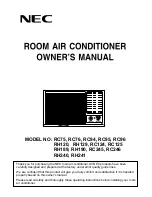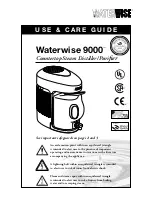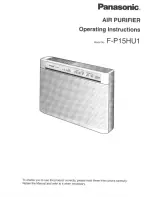
Johnson Controls
5586996-JSG-A-0120 | Start-Up & Operation Guide
40
Cooling Operation
The rooftop unit has cooling operation as a standard
option. The cooling section consists of compressors,
condenser coils, evaporator coils, thermostatic expan-
sion valves (TXVs), and other components.
Single speed scroll compressors are standard, with vari-
able speed drive compressors on first stage as an option.
Every compressor system has an OAT cooling enable
setpoint that must be set. This setpoint is user adjustable.
• Without low ambient option: 45.0°F (min. setpoint)
• With low ambient option: -10.0°F (min. setpoint)
The sequence of operation for MZVAV units and SZVAV
units differ. The differences are explained in this section.
MZVAV Cooling Operation
When unit type is MZVAV, the unit controller continuous-
ly monitors the operational zone temperature. The oper-
ational zone temperature is used to determine whether
the unit needs to provide cooling, heating, or neither.
The operational zone temperature relies on which
of the following sensors are connected and reliable.
When more than one is connected and reliable, they
are used in order of priority.
• BAS input (times out after 15 minutes when the
value is not updated)
• NetSensor
• Zone temperature (ZT) sensor
• Return air temperature (RAT)
When the operational zone temperature for the active
changeover method is greater than the operating cool-
ing setpoint, the unit enters an active cooling mode.
When the operational zone temperature for the active
changeover method is less than the operating cooling
setpoint by 1.0°F, the unit exits the active cooling mode
and returns to satisfied mode.
Once in an active cooling mode, the unit controller
regulates stages of cooling/economizer operation to
achieve and maintain the active discharge air tempera-
ture (DAT) setpoint.
Discharge Air Temperature Reset
Rooftop units configured for MZVAV operation have the
option to reset the active DAT setpoint via one of five
methods. These five different methods allow the unit to
meet almost any engineer/customer specification.
SZVAV Supply Fan
When the unit type is set to SZVAV, the supply fan has
a VFD.
When continuous ventilation is user enabled, the sup-
ply fan runs when the occupancy mode is OCC.
Views
> Details > Supply Fan > Setup
When continuous ventilation is user disabled, the fan
only runs with a demand for cooling, heating, dehu-
midification, or humidification.
In a SZVAV application, the supply fan speed is con-
trolled by the different unit modes.
•
Fan Only:
The supply fan speed is at SZVAV
minimum fan speed.
Views > Details > SZ VAV >
Setup > SZVAVFanOnlyFanSpd
•
Low Cooling:
The supply fan speed is at SZ-
VAV minimum fan speed. If modulating gas
heat is enabled, SZVAVMinFanSpd is dis-
played as SZVAVClgMinFan.
Views > Details >
SZ VAV > Setup > SZVAVMinFanSpd
or
SZVAV-
ClgMinFan
•
High Cooling:
The supply fan speed starts to in-
crease as the cooling demand increases until it
reaches 100%
•
Low Heating:
Only available with modulating gas
heat. The supply fan speed is at SZVAV heating
minimum fan speed.
Views > Details > Single
Zone VAV > Setup > SZVAVHtgMinFan
•
High Heating:
Staged gas heat only systems
default to 100% during all heating operation. For
modulating gas heat systems, the supply fan
speed starts to increase as the heating demand
increases until it reaches 100%
Redundant Supply Fan VFD
The rooftop unit has the option of having a Redundant
supply fan VFD. If this option was chosen, the unit has
one supply fan motor and two supply fan VFDs.
The two VFDs are operated in a lead/lag sequence.
The lead/lag sequence is based on one of the follow-
ing:
• Supply fan runtime
• Supply fan start equalization
•
User-specified time periods
If the lead supply fan VFD develops a fault, the unit
controller automatically starts the lag supply fan VFD
to keep the unit in operation.
















































